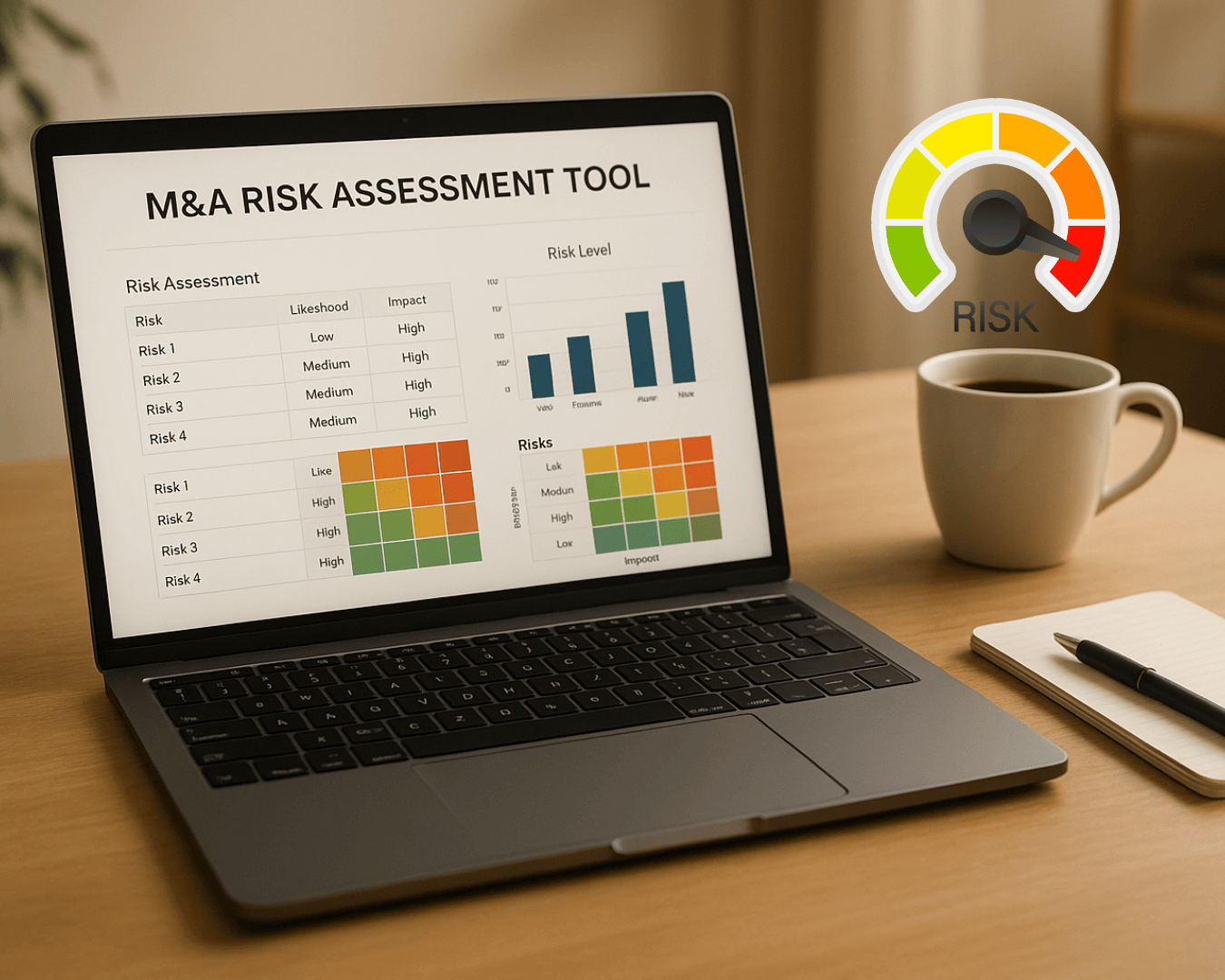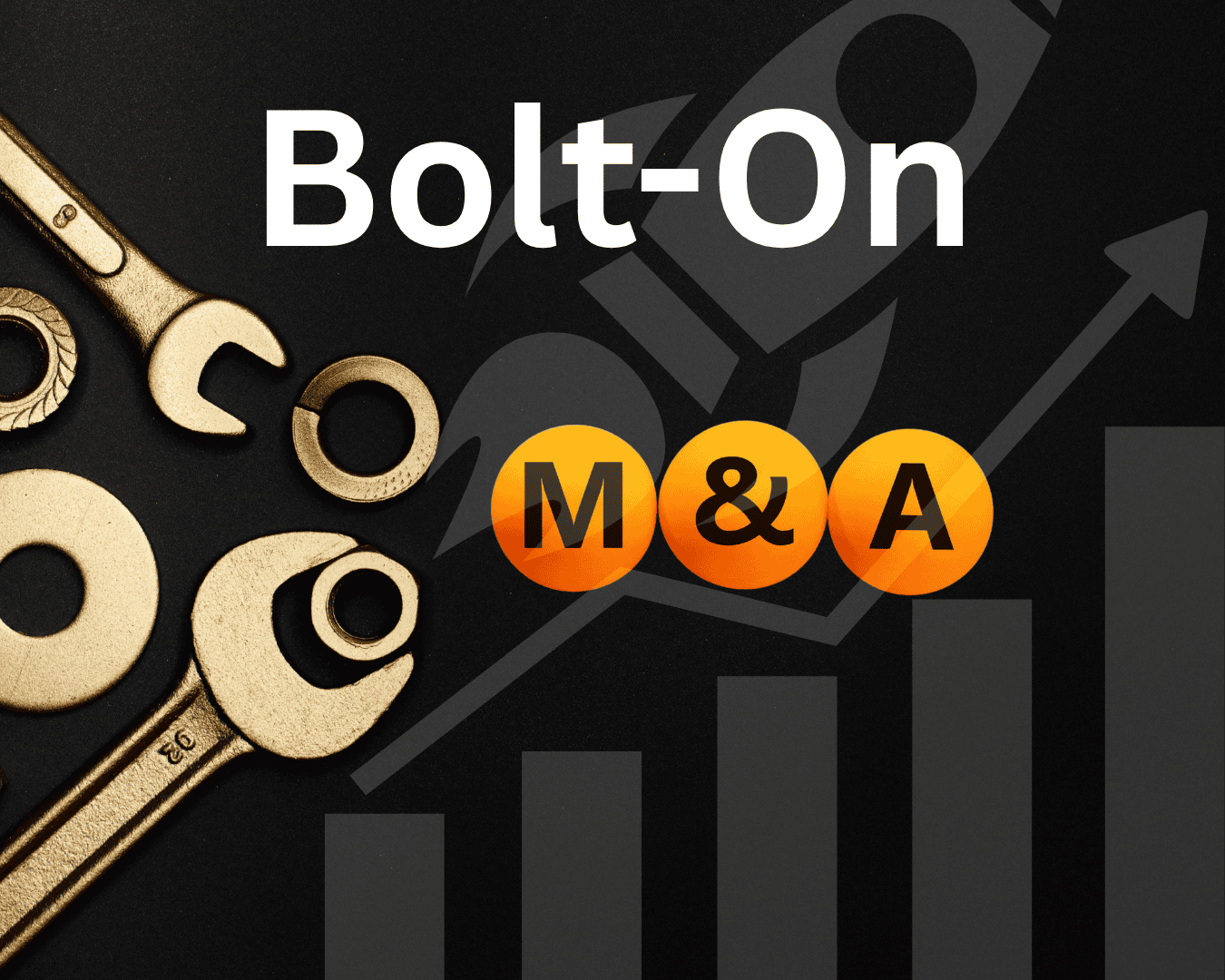When buying small or medium-sized businesses (SMBs), understanding their financial history is critical. Historical financial trends reveal patterns in revenue, cash flow, and debt management, helping buyers assess a business's stability and growth potential. Ignoring these trends can lead to overpaying, hidden risks, or acquisition failures.
Key Takeaways:
- Financial Trends: Look at multi-year revenue, profit margins, and cash flow to spot patterns. Stable trends often indicate resilience, while erratic ones may signal risks.
- Valuation Risks: Relying only on current-year data can lead to overvaluation or missed opportunities. Analyze 3-5 years of financial records for a clearer picture.
- Cash Flow Insights: Profitability doesn't always mean liquidity. Historical cash flow trends reveal if a business can sustain operations and handle seasonal fluctuations.
- Debt Levels: High or poorly managed debt can pose risks. Evaluate debt trends and repayment capacity to gauge financial health.
Analyzing these trends ensures smarter decisions, fair valuations, and fewer surprises post-acquisition. Use tools and expert advice to streamline the process and uncover potential risks.
How to Analyze SMB Deals Like an M&A Pro: Identify BAD DEALS in 5 Minutes Flat
The Risks of Ignoring Historical Financial Trends
Overlooking historical financial data can lead to expensive mistakes. Without thoroughly examining past financial patterns, buyers risk overpaying or facing unforeseen challenges after an acquisition. This makes a detailed review of past financial performance crucial before moving forward.
Impact on Business Valuation
Relying solely on current-year performance can paint a distorted picture. For example, a business might show strong profits in a single year due to a one-time contract or temporary market advantages. However, skipping an analysis of the past three to five years might obscure a history of thinner margins or inconsistent performance. This lack of context can lead to overvaluing the business based on an exceptional year. On the flip side, a company experiencing a temporary slump might actually demonstrate resilience and growth potential when viewed through a broader lens.
Problems Assessing Business Stability
One of the most common pitfalls in small and medium-sized business (SMB) acquisitions is neglecting to review cash flow trends. While profit and loss statements may suggest profitability, it’s the cash flow statement that reveals whether a business can reliably pay its bills and sustain operations. Ignoring historical cash flow patterns can hide red flags like seasonal cash shortages, prolonged payment cycles, or consistent cash burn - even in businesses that appear profitable on paper. Additionally, historical trends can shed light on how a business has weathered tough economic periods, such as maintaining operations during the disruptions of 2020, which current financials might not fully reflect.
Risk of Failed Acquisitions
Failing to account for historical financial trends doesn’t just obscure a company’s stability - it can also set the stage for acquisition failures. Buyers unaware of a company’s financial past may face unpleasant surprises post-acquisition, such as unexpected cash flow gaps requiring additional working capital or delays in receivables collection. Overlooking historical cost data can lead to overinvesting in inventory or capital, further straining resources. Moreover, understanding past cash flow performance is key to building adequate financial buffers and reserves. Without this insight, buyers may leave the business vulnerable to unforeseen expenses or economic downturns.
These risks underscore the importance of thoroughly analyzing historical financial trends before committing to any SMB acquisition. A careful look at the past can provide clarity and prevent costly missteps.
Key Financial Metrics to Analyze Historical Trends
Knowing which financial metrics to focus on can be the difference between a smart acquisition and a costly misstep. These metrics help you verify whether a business's historical performance aligns with its asking price and future potential. When reviewing trends, three critical areas deserve attention: revenue and profitability patterns, cash flow behavior, and debt management. Each provides a unique perspective on the company’s financial health and long-term outlook.
Revenue Growth and Profit Margins
Revenue trends offer a snapshot of whether a business is growing, shrinking, or stuck in neutral. Consistent revenue growth suggests a strong business model, steady market demand, and effective leadership. It’s a sign the company has a foothold in its market and knows how to maintain it.
Profit margins, on the other hand, reveal how efficiently the business operates and its ability to price its products or services effectively. Stable margins over time suggest good cost control and thoughtful pricing strategies. However, fluctuations in margins may indicate rising costs, pricing pressures, or competitive challenges. Gross margins are particularly useful, as they highlight the core profitability of the company before factoring in overhead expenses.
When you see sustained revenue growth paired with stable or improving margins, it’s a clear indicator of solid operational management and long-term financial stability.
Next, it’s crucial to dig into cash flow trends to understand how liquidity supports daily operations.
Cash Flow Patterns
Cash flow analysis goes beyond profit and loss statements, offering a clearer picture of financial health. Operating cash flow trends show whether a business can generate enough cash from its day-to-day operations to cover its expenses without relying on outside funding.
Seasonal cash flow variations are another important factor. A business with predictable seasonal fluctuations needs careful planning to ensure it has enough working capital during slower periods. This ensures obligations are met even when revenue dips temporarily.
Free cash flow is another key metric, as it reflects the company’s ability to invest in growth or pay down debt. Improvements in working capital trends, like a shorter cash conversion cycle, point to efficient operations. On the flip side, a declining trend could signal deeper issues that may affect future performance.
Lenders often prefer businesses with steady cash flow, as it makes financing less risky. Conversely, businesses with unpredictable cash flow may face stricter terms or require more cautious financial planning.
Finally, understanding a company’s debt levels is essential for assessing financial risk.
Debt Levels and Financial Leverage
Looking at a company’s historical debt trends can reveal how it manages financial risk and allocates its resources. Debt levels relative to earnings provide insight into whether the business takes a cautious or aggressive approach to financing.
Debt service coverage is another critical metric. It measures the company’s ability to meet its debt obligations using its operating income. A positive trend in this area suggests a stronger financial position, while a weaker trend might signal trouble in managing debt.
The structure of the debt matters too. Short-term refinancing obligations carry higher risks compared to long-term, fixed-rate debt. Similarly, secured debt, backed by specific assets, is generally less risky than unsecured debt or more complex financial arrangements.
A business that reduces its leverage during strong performance periods demonstrates financial discipline. On the other hand, a pattern of increasing debt could indicate underlying issues that may persist post-acquisition.
Lastly, tracking interest rate trends on existing debt can offer additional insights. Lower rates often reflect improved creditworthiness, while rising rates might hint at challenges that could complicate future borrowing.
sbb-itb-a3ef7c1
How to Analyze Historical Financial Trends
Analyzing historical financial trends requires a structured approach that combines detailed data collection, advanced tools, and expert insights. This process helps uncover patterns, verify assumptions, and avoid costly errors that could jeopardize an acquisition. Here’s how to approach it step by step.
Gathering and Organizing Financial Records
To start, focus on collecting and organizing complete financial records. A solid analysis depends on having access to comprehensive data, such as income statements, balance sheets, and cash flow statements from at least the past three years. Without this, critical issues - like seasonal fluctuations, unexpected liabilities, or one-off events - can remain hidden, potentially distorting the business’s true financial health.
Ensure that the data is categorized consistently by year and accounting method. Address any inconsistencies, such as extraordinary items or seasonal effects, to create a clear and accurate financial picture. Tools like trend graphs and ratio analyses can make patterns and outliers more visible, helping you effectively communicate insights to stakeholders.
Using Tools and Technology for Analysis
Modern technology, especially AI-powered tools, has made financial analysis faster and more reliable. These platforms can handle large datasets, standardize financial figures, and benchmark performance against industry norms. They also reduce the risk of human error and provide secure environments for managing sensitive data, such as permission-controlled data rooms.
Scenario forecasting is another key feature of these tools. By modeling potential outcomes based on historical data, these platforms help assess risks and opportunities before making an offer. For instance, Clearly Acquired offers an all-in-one platform that simplifies financial analysis while maintaining strict data security throughout the acquisition process.
Working with Experts for Financial Due Diligence
While technology can automate many aspects of analysis, expert input remains crucial. Professionals bring an independent perspective, interpreting complex data and identifying subtle warning signs that algorithms might overlook. They can also validate whether historical trends align with the business’s claimed value and future growth potential. This independent assessment helps reduce bias and highlights hidden risks, ensuring a thorough due diligence process.
Conclusion: Using Historical Financial Trends for Successful SMB Acquisitions
Historical financial trends are a cornerstone of making strategic and well-informed SMB acquisitions. By diving into multi-year financial records, you gain insight into a business's resilience against market fluctuations and its capacity for sustained growth over time. Metrics like profit margins and return on assets (ROA) that show stability or improvement can signal a well-managed, viable business worth considering. Ignoring these trends, however, can lead to costly mistakes.
Failure to analyze historical trends can result in flawed valuations and unforeseen challenges after the acquisition. For instance, overlooking rising labor costs or ongoing sales declines could mean acquiring a business that struggles to stay profitable, putting your investment at risk. This is why a thorough review of financial trends is not just helpful - it’s essential for successful SMB acquisitions.
Examples from the real world highlight how verifying consistent financial performance can turn potentially risky deals into strategic opportunities. Comparing a company’s historical metrics to industry benchmarks allows for realistic valuations and a clearer understanding of potential risks. Businesses with a proven track record, a stable customer base, and a strong brand reputation often present lower risks and greater growth potential. Key metrics such as profit margins, ROA, and industry growth rates help you evaluate operational efficiency, competitive positioning, and long-term sustainability.
Modern tools can make this process even more efficient. Platforms like Clearly Acquired combine AI-powered valuation tools, secure data rooms, and expert advisory services to simplify the analysis of historical trends. This comprehensive approach to Main Street M&A supports buyers in connecting past financial performance with future strategies, securing financing through SBA loans or alternative structures, and making confident acquisition decisions rooted in solid financial analysis.
With the right combination of tools, expert advice, and a focus on historical financial trends, you can turn what might seem like a risky venture into a well-calculated acquisition. By grounding your due diligence in these trends, every deal becomes a step toward achieving sustainable growth.
FAQs
How does analyzing historical financial trends help avoid overpaying for a small business?
Analyzing historical financial trends offers valuable insights into a business's past performance, revenue stability, and overall growth path. This kind of evaluation allows potential buyers to gauge the company’s actual worth and spot any discrepancies between its current valuation and its true financial condition.
By diving into past financial data, buyers can uncover exaggerated forecasts or trends influenced by market buzz, helping them avoid overpaying. It also provides a solid foundation for setting realistic expectations and negotiating a reasonable purchase price, minimizing the risk of overvaluation and enabling smarter investment choices.
What financial metrics should I review to assess a small or medium-sized business's historical performance?
When assessing the past performance of a small or medium-sized business, it's crucial to dive into important financial metrics such as revenue trends, profit margins (gross and net), EBITDA (Earnings Before Interest, Taxes, Depreciation, and Amortization), cash flow, and balance sheet details like assets and liabilities.
These numbers offer a clear picture of the business's financial health, profitability, and potential for growth. For instance, consistent revenue growth and solid profit margins often signal a well-run operation, while steady cash flow and manageable liabilities suggest a stable financial foundation. These insights are invaluable when making decisions about acquiring a business.
Why should cash flow be analyzed separately from profitability when evaluating a business for acquisition?
Cash flow and profitability are two sides of the same coin, but they tell very different stories about a business's financial health. While profitability highlights earnings on paper, cash flow reveals the actual liquidity - the money moving in and out of the business. This difference is crucial because a company can look profitable yet still struggle to pay its bills if cash inflows and outflows aren't properly aligned.
Digging into cash flow patterns gives you a clearer picture of whether the business has enough liquidity to fuel growth, pay off debts, or weather unexpected setbacks. This kind of analysis is especially important when you're considering an acquisition. It helps you make smarter decisions and ensures the business will have the financial stability to keep running smoothly after the purchase.





























.png)








































%20Loan%20Application%20Checklist.png)







































